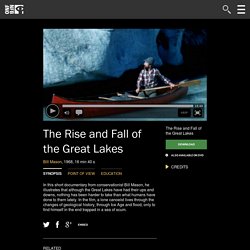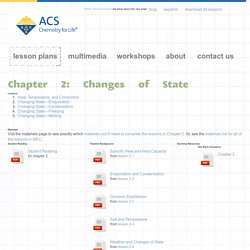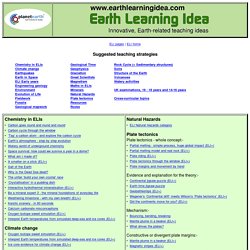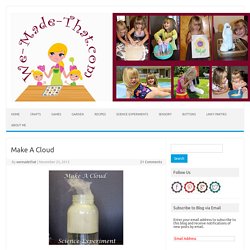

Great Water Journeys. How much Water is there on Earth? - Number Hub (Ep 1) - Head Squeeze. How much water is there on Earth, from the USGS Water Science School. All Earth's water, liquid fresh water, and water in lakes and rivers View full size As you know, the Earth is a watery place.

But just how much water exists on, in, and above our planet? About 71 percent of the Earth's surface is water-covered, and the oceans hold about 96.5 percent of all Earth's water. But water also exists in the air as water vapor, in rivers and lakes, in icecaps and glaciers, in the ground as soil moisture and in aquifers, and even in you and your dog.
Water is never sitting still, though, and thanks to the water cycle, our planet's water supply is constantly moving from one place to another and from one form to another. All Earth's water in a bubble This drawing shows various blue spheres representing relative amounts of Earth's water in comparison to the size of the Earth. The smaller sphere over Kentucky represents Earth's liquid fresh water in groundwater, swamp water, rivers, and lakes. Do you notice that "tiny" bubble over Atlanta, Georgia? Related topics: The Earth's Fresh and Salt Water. Smart is the New Sexy - Timeline. Sheetflow Where does the water go. Water Bottle Turns Humid Air Into Drinking Water. 5.4 IIB lesson. Rise and Fall of the Great Lakes ,The by Bill Mason. Credits director Bill Mason writer photography editing animation producer Joseph Koenig animation camera Kjeld Nielsen sound editing Alex Rayment re-recording Roger Lamoureux Michel Descombes music Bruce Mackay Robert Fleming cast.

Middle School Chemistry Unit. Skip Navigation Middle School Chemistry big ideas about the very small Lessons Materials Vist the materials page to see exactly which materials you'll need to complete the lessons in Chapter 2.

Teaching Resources Student Reading Student Reading for chapter 2 Teacher Background Test Bank Questions Chapter 2 Sample Multimedia. Delta Education FOSS Middle School Complete Courses - FOSS Middle School Weather and Water - 2nd Edition. Grades 6 - 8 The FOSS Weather and Water Course focuses on Earth's atmosphere, weather, and water.

A good understanding of meteorology as an earth science isn't complete without an introduction to the physics and chemistry that drive weather. Understanding weather is more than reading a thermometer and recording air-pressure measurements. Students first learn about atoms and molecules, air masses, wind, and heat transfer. Then they investigate phase chance and meteorology before looking more closely at the water cycle, ocean currents, and climate. Investigations in this course: Teaching_strategies.
Natural Hazards• ELI Natural Hazards category Plate tectonicsPlate tectonics - whole concept:-• Partial melting - simple process, huge global impact (ELI+)• Partial melting model and real rock (ELI+)• Plate riding (ELI+)• Plate tectonics through the window (ELI+)• Plate margins and movement by hand Evidence and explanation for the theory:-• Continental jigsaw puzzle (ELI+)• Earth time jigsaw puzzle• Geobattleships (ELI+)• Wegener’s ‘Continental drift’ meets Wilson’s ‘Plate tectonics’ (ELI+)• Did the continents move for you?

(ELI+) Mechanism:-• Bouncing, bending, breaking• Mantle plume in a beaker (ELI+)• What drives the plates? Constructive or divergent plate margins:-• Mantle plume in a beaker (ELI+)• Magnetic stripes (ELI+)• Model a spreading ocean offset by transform faults (ELI+)• Continental split - the opening of the Atlantic Ocean Resources• Fracking: Recipe for the perfect fracking fluid• Make your own oil and gas reservoir• Trapped! Volcanoes• Blow up your own volcano! Water Models. Rainy Day Hike. Piece It Together. Old Water. The Incredible Journey. Imagine! Make A Cloud.
46K+Do your kids ever ask you how a cloud is made?

My oldest asks me that a lot, and although I can explain it to her I thought it would be a LOT more fun to let her make a cloud. That is why we decided to try this experiment. One of the coolest things about this experiment is that you can actually see the cloud building up in the jar and then when you take the lid off you can touch it. Both girls had fun with this experiment and we had to make several clouds so they could watch them form and then let them loose to touch. What is happening with this experiment? Check out our SCIENCE board on Pintrest for more Experiments! Supplies Jar With Lid Warm Water (should be steaming a little but not boiling) Ice Match Directions Pour warm water in the bottom of your jar. Light a match and throw into jar then replace lid. Watch the cloud form, and how it moves in a circular pattern in the jar.
Open the Jar and let your cloud free!